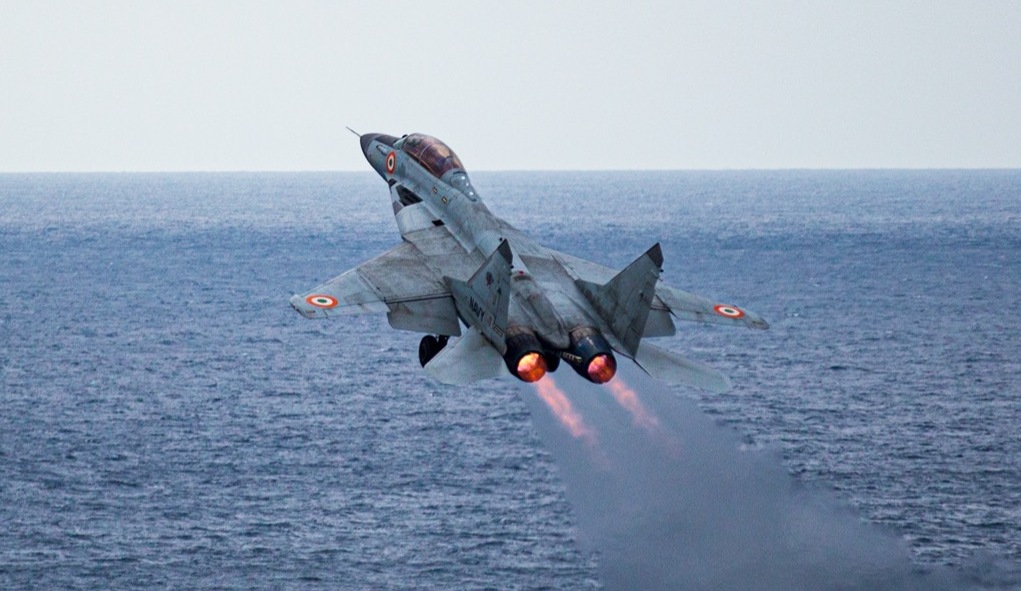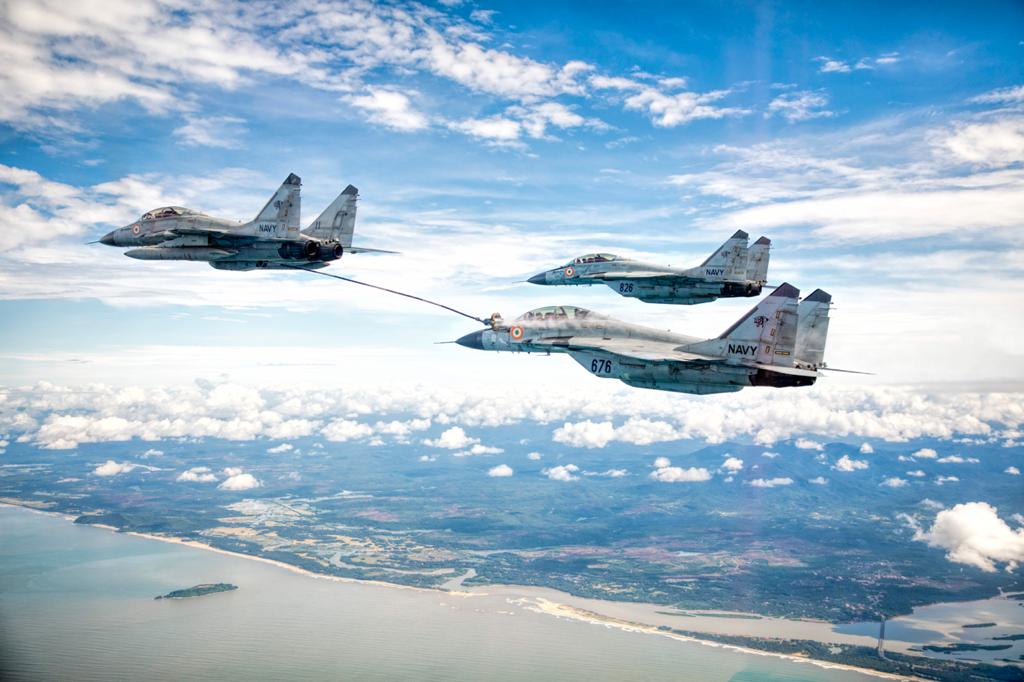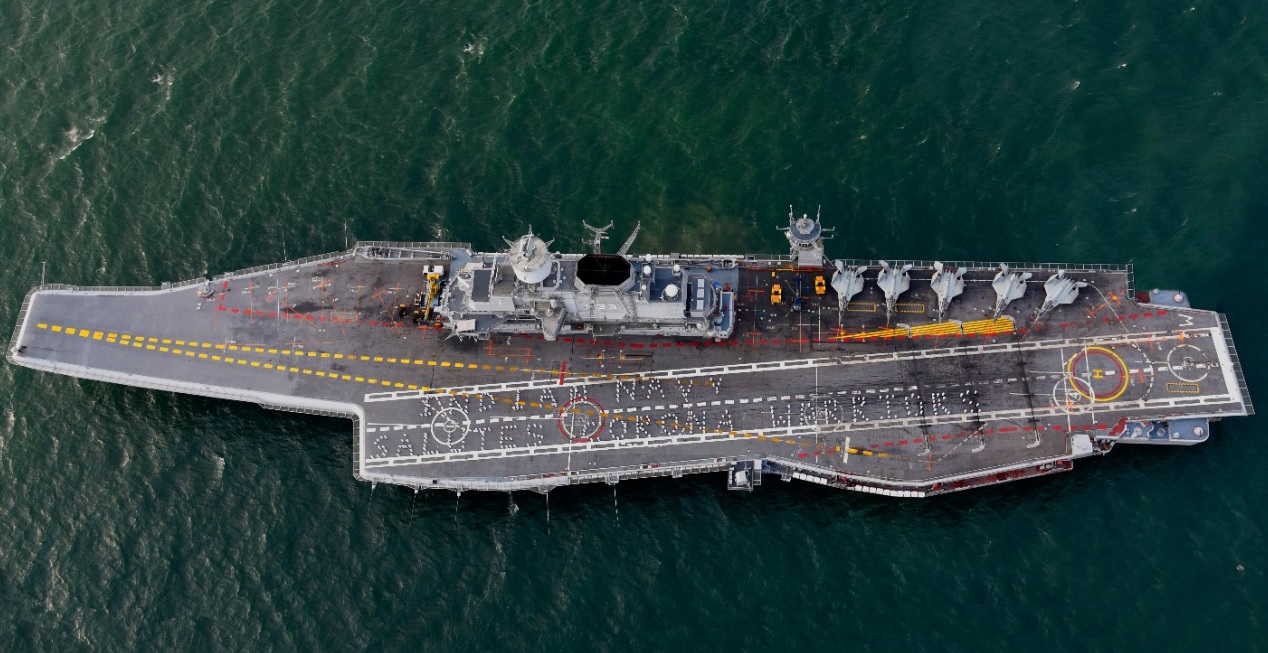
Amidst a gradually loosening standoff between Indian and Chinese ground forces in eastern Ladakh in India’s far north, an unspecificed number of Indian Navy MiG-29K fighter jets are headed to a northern airbase to add muscle to Indian Air Force fleets already operating there in a combat ready posture.
This isn’t the first time naval Fulcrums are headed north, but their movement into a conflict theatre is a first. In the past, small numbers of MiG-29Ks have operated from the Ambala and Adampur air bases in Haryana and Punjab respectively for exercises with IAF jets. The Ambala base, incidentally, will receive its first Rafale jets next week.
Confirming the deployment of MiG-29Ks to a northern base, an Indian Navy officer at the INS Hansa naval air station told Livefist, “The jets have operated from northern bases on a couple of occasions already over the last few years in anticipation of such exigencies. Pilots are fully tied-in with operating in that area. We conduct a great deal of over-shore and inland training anyway, so this is an expected deployment. The use of available combat assets to generate sorties precisely where and when required makes eminent sense.”
Two squadrons of the Indian Navy’s MiG-29Ks are based in Goa (INAS 303 Black Panthers and INAS 300 White Tigers), with up to half of those jets at any given time operating off the INS Vikramaditya aircraft carrier. The other jets operate from shore and will in future operate off the Indian Navy’s new indigenous aircraft carrier, the Vikrant that’s still at least two years off. Sending the MiG-29Ks up north is being seen as a no-nonsense, optimal use of available assets at a time when they’re needed most.
The MiG-29Ks aren’t the first naval assets in the fight, as it were, in Ladakh. Indian Navy P-8I long range surveillance planes, based in Arakkonam in the south, have also flown into India’s north amidst the military standoff, providing imagery to the armed forces and intelligence agencies. Incidentally, the first of four new P-8Is will likely be delivered to Indian Navy next month.
While the obvious cohesion of force elements is significant, especially amidst an emphasis on jointness, the movement of the MiG-29Ks is also an unignorable indicator of the IAF’s squadron force levels that are currently at a historic low. At this time, inbound fighters include the Rafales, a trickle of LCA Tejas jets and bit of a wait before higher performance versions of the latter become available. A long anticipated $5.2 billion deal for 83 LCA Mk.1A jets is expected this December.

The MiG-29Ks will join large numbers of Indian Air Force jets already operating in and around Ladakh, including MiG-29UPGs, Su-30 MKIs, Mirage 2000s and Jaguars. Earlier this month, the MiG-29Ks were cleared to receive a portion of the first order for indigenous Astra beyond visual range air-to-air missiles.

The INS Vikramaditya has been on deployment in the Arabian Sea since late May, shortly after tensions began in Ladakh. The MiG-29K began replacing Indian Navy Sea Harriers in 2013. The latter fleet of jump jets were retired from service in 2016 after a limited upgrade (detailed here) that expanded their capabilities.

The Indian Air Force was recently cleared to negotiate a deal for 21 MiG-29 UPGs. The aircraft will be built from old unconstructed airframes at RAC MiG’s Lukhovitsy facility near Moscow. The aircraft will be manufactured to the upgraded ‘UPG’ standard matching the IAF’s current Fulcrums. The upgrade program has given the IAF’s legacy MiG-29s the ability to deploy more weapons types including anti-ship and strike missiles, a new radar, an infrared targeting system, helmet mounted sight and targeting system for pilots, a refreshed cockpit and corrosion protection for increased service life.

I think even the squadron of Tejas fighters must be moved from Sulur to Ladakh (or to a nearby base).
Move everything to North India..South will pay taxes for your shitty attitude
yes, they need a taste of the battle theatre now.
If you have the faintest idea of defence planning, don’t write the kind of rubbish you wrote. First of all, IN pilots need exposure. 2ndly, India has to be ready at all times to deploy its air assets optimally in case of hostilities and thus manage the war theatre. 3rdly, the induction of IN pilots into the other sectors (Ladakh in this case) is a huge morale booster to both actually, but more to the IAF. Guru Arjan Dev wrote – “Jaise rann mai sakha bharaat”- O God, your support to me is akin to a close friend (sakha) or brother (bharaat) who suddenly arrives at the battle-field to jointly fight alongside me to kill the enemy. The IN pilots are alike to the IAF.